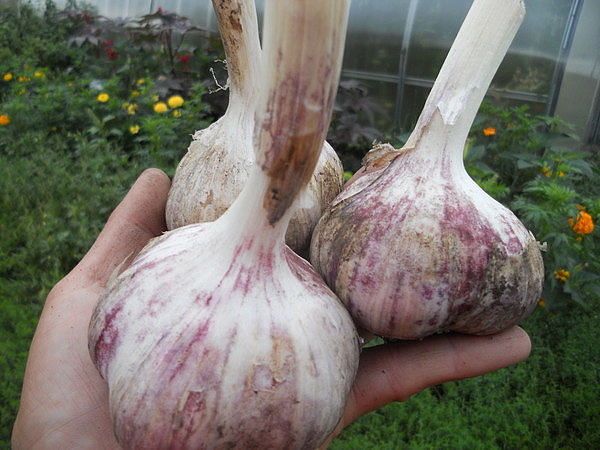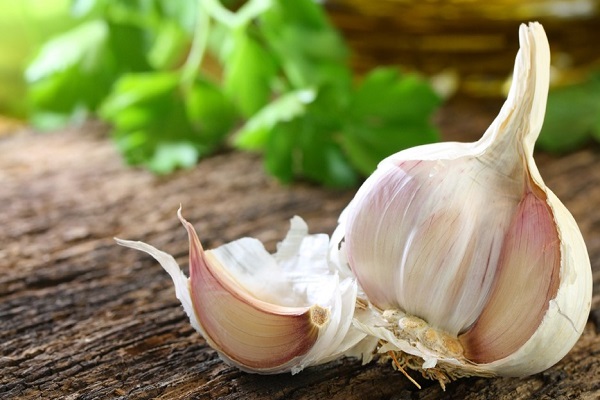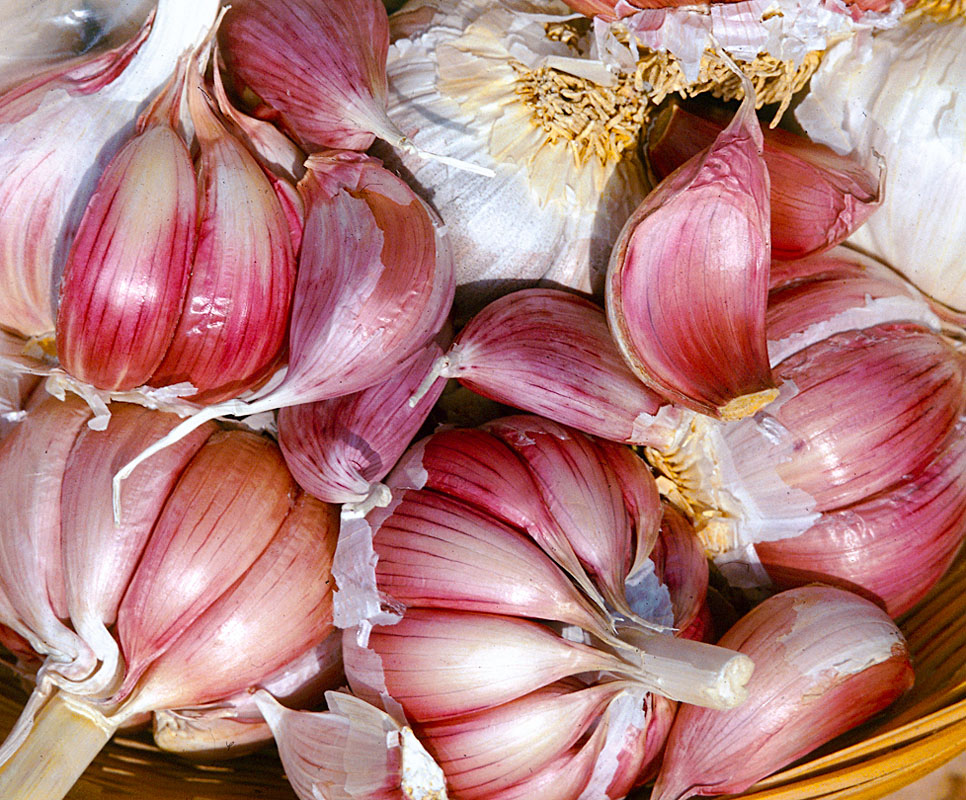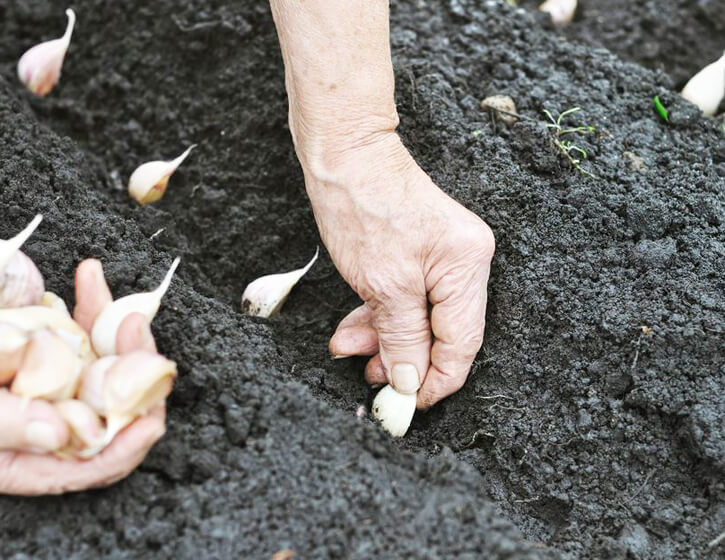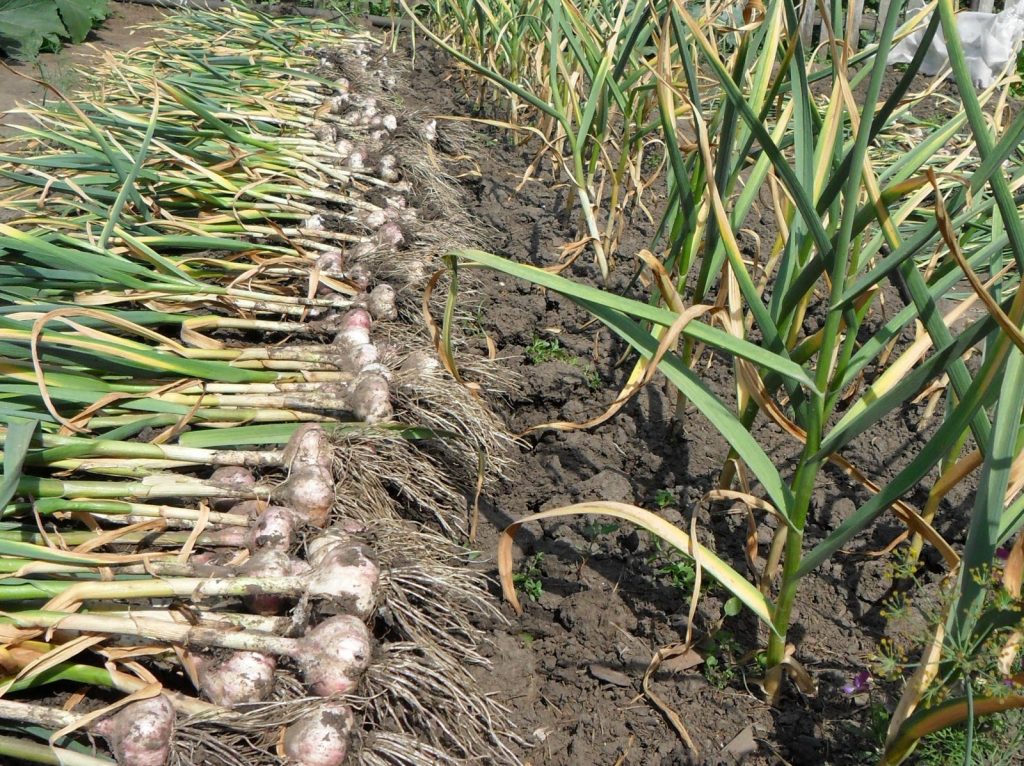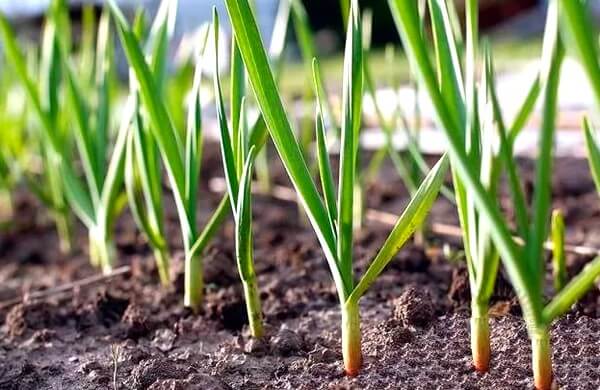Garlic can be grown as a perennial or annual plant. But with long-term cultivation, the cloves grow very small. To grow large cloves of garlic, it must be grown as an annual plant. For this, the culture is planted in spring or autumn. Separate teeth are used as planting material. The culture can be grown both in the Moscow region and in Siberia and Sakhalin, but you need to know the peculiarities of planting and care.
What varieties of garlic are best to grow
You can propagate garlic not only with chives. On the peduncles, airy bulbs are formed, which can also be used as planting material. But not all varieties of garlic have arrows with peduncles.
There are about seventy varieties of garlic in nature. In most cases, gardeners divide it into winter, spring, arrow and non-arrow. In order not to mislead people anymore, we will consider how to grow garlic correctly and what varieties are best to choose for this.
Spring garlic differs significantly from winter garlic in that it does not produce a spike with a peduncle. Its teeth are arranged in a spiral in the bulb. It should be noted that spring garlic is not capable of producing a high yield.
At this time, in winter varieties, the teeth are slightly larger, and they are located around the central core. Also, some varieties of winter garlic have arrows with peduncles. The main feature of this type of garlic is its high yield.
Among the popular varieties of spring garlic, it should be noted:
- Victorio;
- Yelenovsky;
- Gulliver;
- Sochi 56;
- Ershovsky.
Among winter varieties, the most popular are:
- Shooters:
- Lyubasha;
- Dobrynya;
- Sofievsky;
- Alcor;
- Dubkovsky;
- Gribovsky jubilee;
- Gribovsky 60;
- Scythian;
- Large-toothed Kiseleva;
- Hermann.
It should be noted that the arrowhead varieties of garlic have a more pronounced pungent taste, in contrast to the non-arrowhead varieties. In addition, they give large yields and their shelf life is longer.
- Non-Shotgun Garlic Varieties:
- Aleisky;
- Moscow;
- Abrek;
- Odessa 13;
- Gafurian;
- Alekseevsky;
- Komsomolets;
- Petrovsky;
- Degtyarsky;
- Orlovsky.
- Spas;
- Moscow region.
Regardless of which variety will be chosen for planting, the quality of the planting material is important, which consists of the following criteria:
- There should be no dents on the chives;
- There should be no cracks;
- Rotten teeth should be discarded;
- All planting material must be of the same size.
During the selection of planting material, you should not "undress" the teeth. Such an operation negatively affects the quality of the future crop and its shelf life.
Tips and tricks for growing garlic
Before growing garlic in a garden bed, you need to take into account the crop's requirements for moisture and soil condition. In the area where you plan to plant, the soil should be neutral. In addition, it is desirable that groundwater be located as deep as possible. It is undesirable to plant the plant in the shade, as in this case the yield decreases.
Regardless of the fact that garlic, like onions, likes to be revived, in no case should fresh manure be introduced. In addition, it is best to choose a garden bed for planting this culture, on which cucumbers or cabbage previously grew.
The soil for planting must be prepared in advance. For winter garlic - in half a month, for ardent - in autumn.
As fertilizer, it is necessary to apply to the soil per hundred square meters:
- humus up to six kilograms;
- potassium salt - twenty grams;
- superphosphate - no more than thirty grams.
Immediately before planting, you can also add ammonium nitrate.
Those wondering how to get a good harvest of garlic should know exactly when to plant. The best time for planting is between the last decade of September and the first two decades of October. It is best to plant garlic one and a half months before the first frost. Thus, he will have time to put down roots, thanks to which he will be able to winter comfortably. But at the same time, he must not sprout. Otherwise, the harvest will be weak.
In order for the garlic to grow large, you need to properly prepare the planting material. For this, the largest onions are selected, disassembled into teeth and sorted. The rotten and damaged are thrown away. Air bulbs that have grown in the garden along with garlic are also used as planting material.
You can get high-quality garlic from air bulbs only if you grow them for two years: the first year - single-tooth heads, in the second - full-fledged bulbs.
Ardent garlic is planted in the soil only in spring. In this case, the landing should be done after the snow melts. Thus, the culture will have time to develop well and grow large heads. Otherwise, the harvest will be weak, the bulbs will grow small.
For those who do not know how to grow large garlic in the garden, we will give important advice on planting cloves in the soil. Winter garlic should be planted in the ground so that the depth of its planting is equal to two heights of the clove itself. Thus, the planting material will not freeze in the winter.
The spring type of garlic is planted in small rows. At the same time, you do not need to press the teeth into the ground - you can damage the bottom, which will not allow the roots to develop. Winter crops should be covered with mulch and spruce branches. This will help trap snow. Thus, the necessary microclimate for plant growth will be maintained in the garden.
Plant care consists in loosening the soil and eliminating weeds. You need to water the garlic very carefully, as this plant does not like excessively moist soil. Watering is done in dry weather when there is not enough moisture in the soil. A month before harvesting is performed, they must be stopped so that rot does not form on the root system.
Gardener Secrets
Most gardeners share their experience on how to properly grow garlic. As garlic planting material, only air bulbs are used, which are popularly called bulbs. Gardeners do the planting of garlic in stages, so that every season they produce a fruitful one.
First of all, they need to be properly assembled. To do this, several arrows are left on the bed, which need to grow for about two weeks on the bed until full technical ripeness. The flower stalks need to be tied up with a bandage, otherwise the bulbs may crumble. After which the plant is dug up, and the bulbs are dried. After that, the peduncles are disassembled and sorted. Only large and medium-sized bulbs are selected for planting. The material should be sown in mid-October. Sowing should be done to a depth of about ten centimeters.
Sowing in open ground can be done both in autumn and spring. Only during autumn sowing are seeds sown denser, since the planting material loses several percent of similarity during frosts. For spring planting, you need to pre-harden the bulbs. To do this, they are either buried for a month, or even one and a half in the snow, or simply put in the refrigerator. In the summer, one-toothed bulbs can be obtained from them.
From the observation of the development of garlic, it was concluded that while keeping the air bulbs on the arrow, the teeth on the head do not crumble until the very harvest. In addition, the size of the heads of garlic increases every year.
Growing garlic is an easy task, little hassle. It also rejuvenates the garlic, making it more resistant to diseases and pests.
